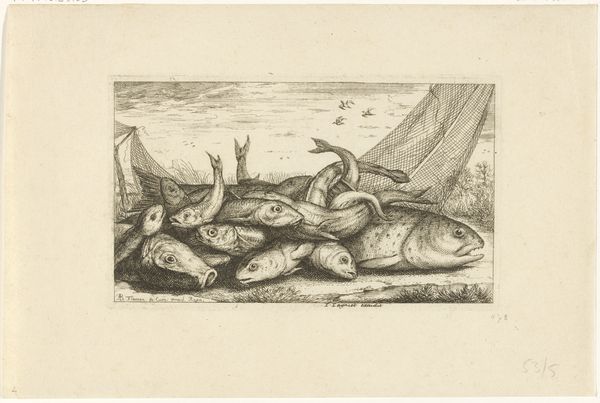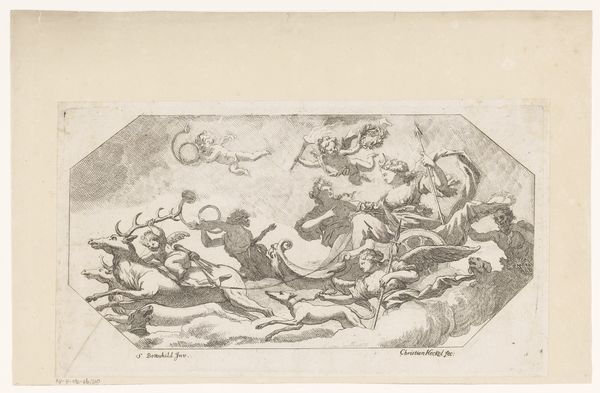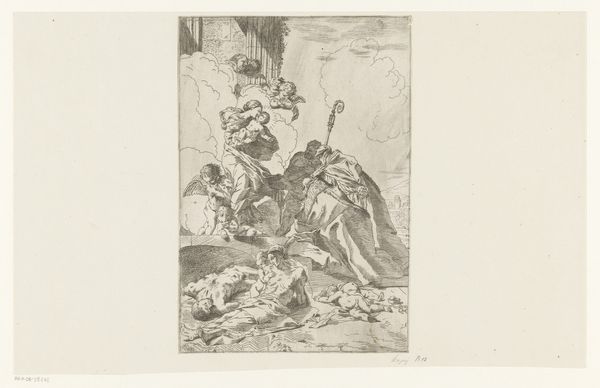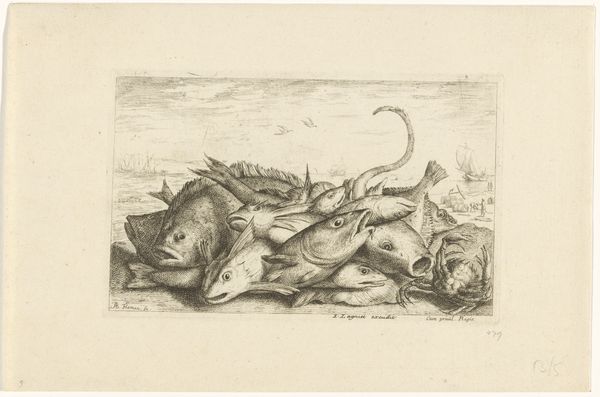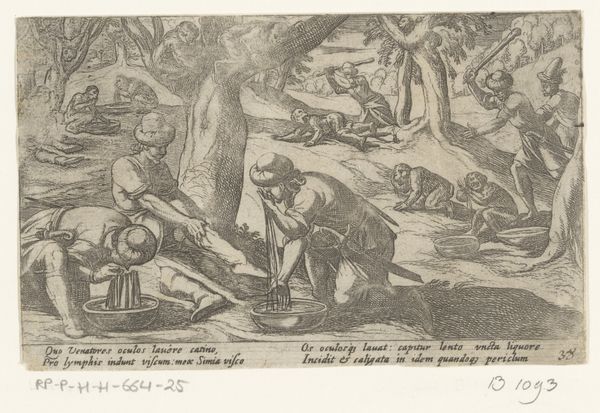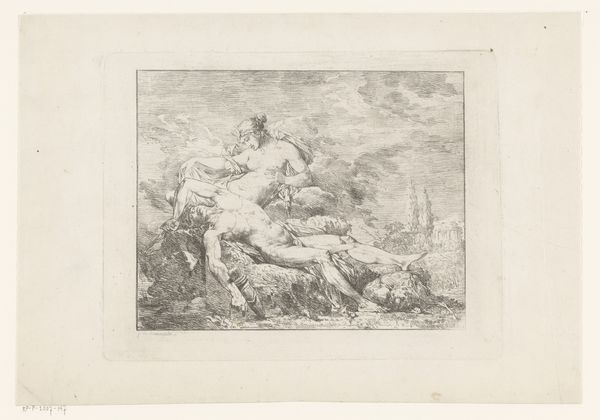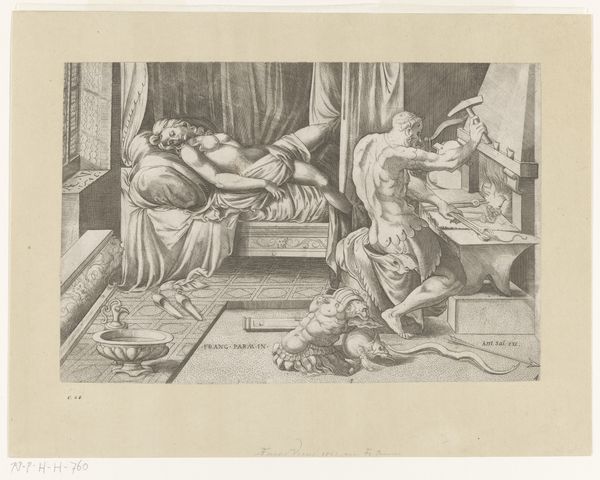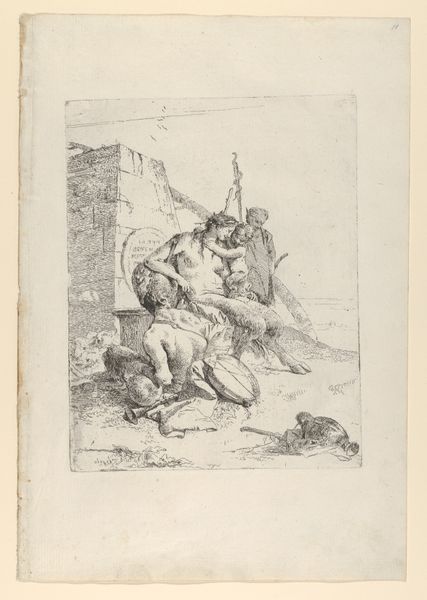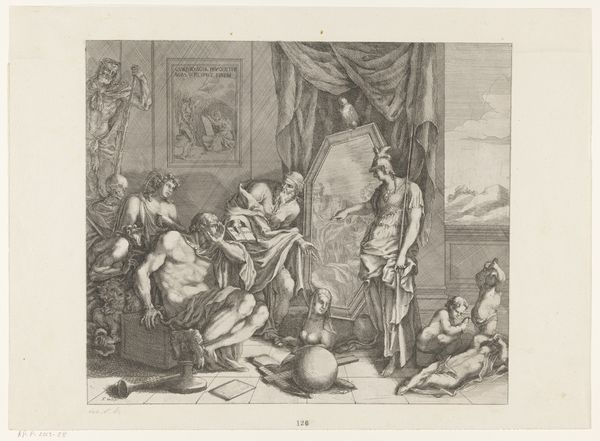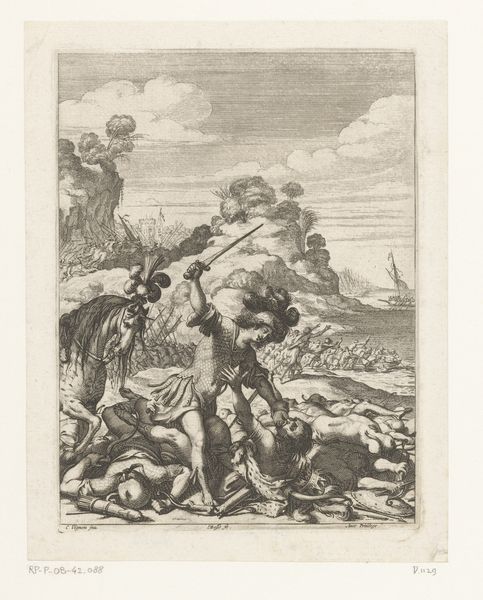
print, etching
#
baroque
# print
#
etching
#
etching
#
genre-painting
Dimensions: height 108 mm, width 176 mm
Copyright: Rijks Museum: Open Domain
Albert Flamen made this small print, Visvangst met heremietkreeft, or 'Catch of Fish with Hermit Crab,' sometime in the 17th century using the etching technique. Acid was used to bite into the metal plate, leaving behind the image, and the plate was likely made of copper or iron. The varying line weights, achieved through careful control of the etching process, give depth to the pile of fish. The net in the background reminds us of the labor involved in this catch; the fisherman's toil made visible. But there is also a sense of abundance, even of waste, suggested by the sheer number of fish heaped together. The print's existence speaks to the economy of the time, as prints like these were relatively inexpensive and accessible to a broad audience. Consider the contrast between the hard work of fishing and the refined skill required to produce this image. Flamen was not only capturing the image of the catch, but also participating in a commercial activity of his own. This work invites us to consider how artistic practices, like printmaking, are always interwoven with social and economic realities.
Comments
No comments
Be the first to comment and join the conversation on the ultimate creative platform.
